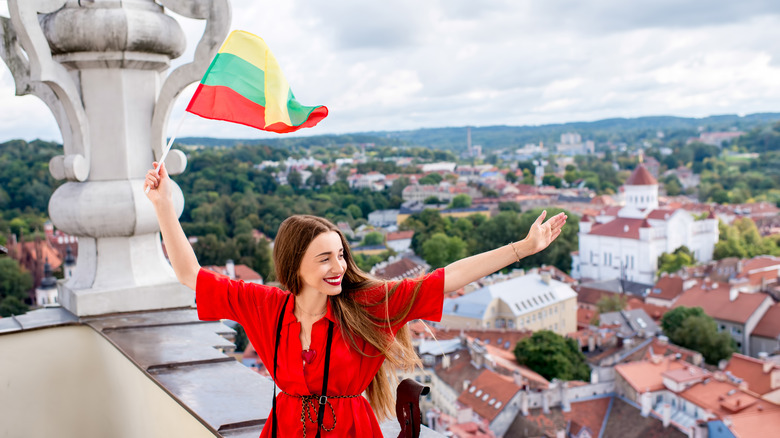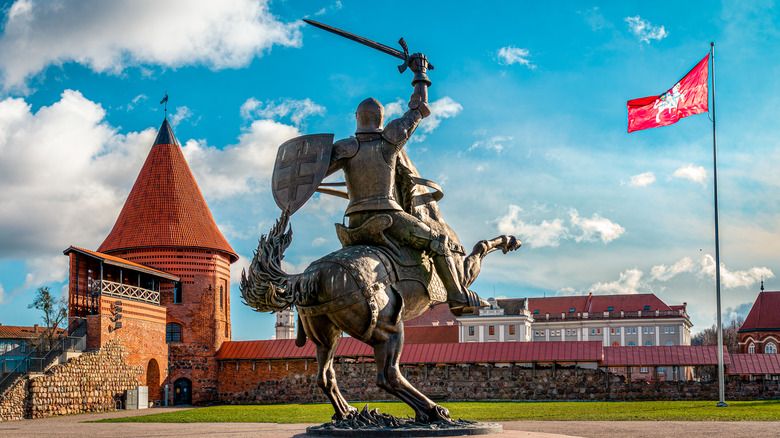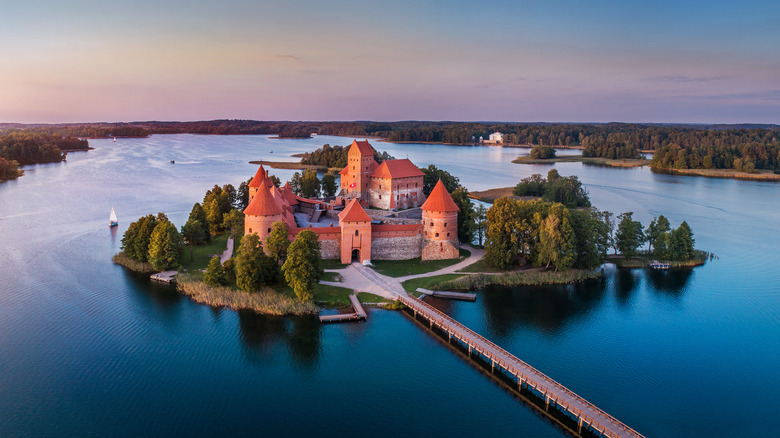Visit This Underrated European Country For Charming And Historical City Breaks
Often overshadowed by its popular European neighbors, Lithuania is an underrated hidden gem waiting to be discovered. This small Baltic nation is one of the least visited in Europe. However, it boasts an intriguing blend of history, culture, and natural beauty unlike anywhere else. From the cobbled streets of its ancient cities to the lush green landscapes, Lithuania offers a variety of experiences for travelers seeking charming and historical city breaks.
The journey through Lithuania begins in its capital, Vilnius. The city's Historic Center, established in the 13th century, is a UNESCO World Heritage site. The Gothic, Renaissance, and Baroque architecture tell stories of a past filled with grand dukes and medieval merchants. It's also one of the largest surviving historic centers in Northern Europe, with an area of 887 acres. As you meander through the narrow, winding streets, you'll be transported back in time, with much to explore.
One of Vilnius' most iconic landmarks is the Gediminas Tower, a symbol of national pride and a remnant of the Upper Castle. From its summit, you can enjoy panoramic views of the city's red-tiled roofs and green spaces. Another must-visit is the classicist-style Vilnius Cathedral, a symbol of Lithuanian baptism. For something quite unusual, don't miss the Republic of Užupis, a bohemian neighborhood that has declared itself an independent republic, complete with its own constitution, government, and currency. But there's more to Vilnius than history — the city pulses with a youthful energy, evident in its lively cafés, art galleries, and thriving nightlife.
Kaunas, Klaipėda, and the Curonian Spit
Kaunas is another destination history buffs must add to their bucket list. Lithuania's second-largest city boasts an impressive array of historical sites, including the medieval Kaunas Castle and the baroque 17th-century Pažaislis Monastery. Kaunas is also renowned for its interwar architecture, particularly its modernist buildings, which have led to its designation as a UNESCO Creative City of Design. The city's vibrant cultural scene, with numerous museums, galleries, and theaters, ensures that there's always something to do.
Klaipėda, Lithuania's coastal gem, offers a different perspective. The city's past as part of the German state of Prussia is evident in its architecture and culture. The Old Town, with its charming half-timbered houses and cobbled streets, exudes a distinctively Germanic feel. A visit to the Klaipėda Castle, built in 1252 by the Livonian Order, provides insights into the city's past as a fortress and trading port. The Lithuanian Sea Museum, housed in a 19th-century fortress, is another highlight, offering a look into Lithuania's maritime relationship.
A short ferry ride from Klaipėda takes you to the Curonian Spit, a 61-mile-long sand dune peninsula shared by Lithuania and Russia, known for its striking natural beauty, high drifting sand dunes, and unique wildlife. A UNESCO World Heritage Site, it features a mix of cultural influences and a history of human settlement dating back millennia. The region is a hotspot for migratory birdwatching and tourism, with efforts in place to preserve its delicate environment from shifting sands.
Trakai, Lithuanian food, and more travel tips
No discussion of Lithuania would be complete without mentioning Trakai. Located a 30-minute drive from Vilnius, Trakai was once a historic capital of Lithuania. It's also home to the only Eastern European island castle, the Salos Castle. This 14th-century fortress, located on an island in Lake Galvė, is like something out of a fairytale. Trakai is also significant for its cultural diversity, particularly the Karaim community, a small ethnic group with Turkic origins. Don't miss the chance to try kibinai, a traditional Karaim pastry.
Lithuanian cuisine is a reflection of the country's history. Sampling cepelinai (potato dumplings filled with meat or cheese), šaltibarščiai (cold beet soup), and šakotis (traditional tree cake) is an absolute must. Each city has its own unique flavors and specialties, providing a delectable adventure for foodies. If you want to try 13th- to 19th-century dishes beloved by Lithuanian nobles, visit the unique fine-dining restaurant Ertlio Namas in Vilnius.
The best time to visit Lithuania is during the late spring and summer when the weather is warmer and the days are longer. This is when the country's natural beauty is most vibrant, and many cultural festivals take place (like Joninės, a midsummer festival). To get around, consider renting a car or using the public transportation system, which seamlessly connects all major cities. And before you depart, make sure to get some amber souvenirs — Lithuania has a long history of amber craft. "Labas," or "hello," to an unforgettable Lithuanian adventure!


